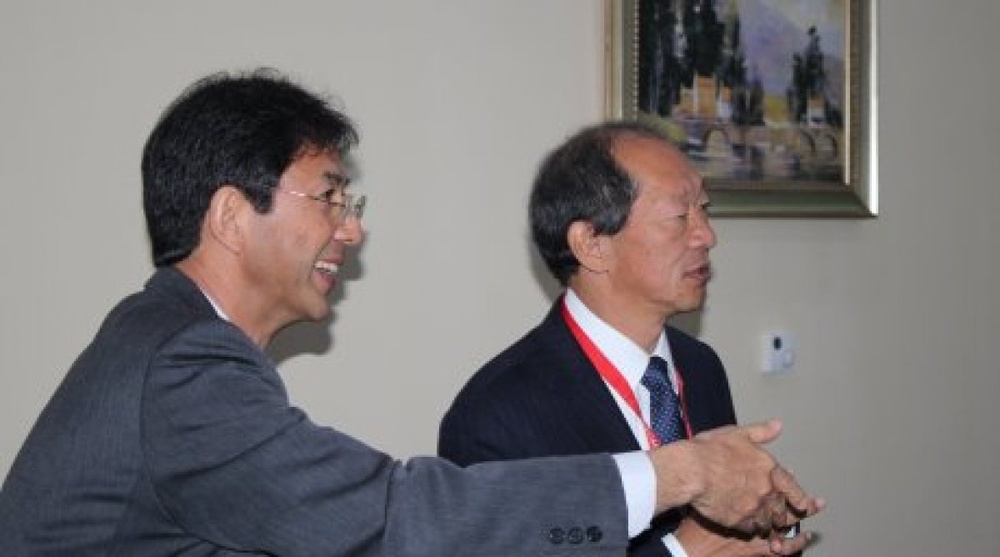
Japanese scientist has presented a research on tissues and bones repair in Astana, Tengrinews reports.





Japanese scientist has presented a research on tissues and bones repair in Astana, Tengrinews reports.
Dr. Yasuhiko Tabata of the Kyoto University talked about successful implementation of biomaterials for tissue repair at the 3rd International Scientific Conference on Regenerative Medicine and Longevity at the Nazarbayev University.
“We can regenerate tissue and we also can regenerate up to 5 centimeters of damaged bones. Human skin can be fully regenerated,” the scientist said. He added that unfortunately researches cannot regenerate organs with biomaterials yet.
Dr. Tabata was invited by Nazarbayev University to collaborate and help implement new technologies in medicine in Kazakhstan.
“Growth factors stimulate natural regeneration. We are too working in this direction, but we are using different approaches. We invited (Dr. Tabata) specifically to collaborate on development of new approaches. We want to see how these drugs would work to speed up treatment of patients,” the General Director of the Center for Life Sciences at the Nazarbayev University Zhaksibai Zhumadilov said.
The new method may soon become the third choice for advanced medical therapy after reconstruction surgery and organ transplantation.
It is based on the natural potential of body to induce tissue regeneration and repair. To realize this tissue regeneration therapy, there are two practical approaches: cell therapy and tissue engineering.
The idea of tissue engineering is to artificially create a local environment which enables cells to enhance their proliferation and differentiation, resulting in cell-induced tissue regeneration. For this purpose, biomaterials are used as the cell scaffold and delivery carrier of biosignaling molecules (growth factor and gene).
If a key growth factor is supplied to the right place at the right time period and concentration, the body system initiate the physiological function, resulting in the natural induction of tissue regeneration. One practical and possible way to enhance the in vivo therapeutic efficacy of a growth factor with an in vivo short half-life period is to make use of drug delivery system (DDS) technology.
Reporting by Renat Tashkinbayev, writing by Gyuzel Kamalova, editing by Tatyana Kuzmina


 +7 (777) 001 44 99
+7 (777) 001 44 99















































